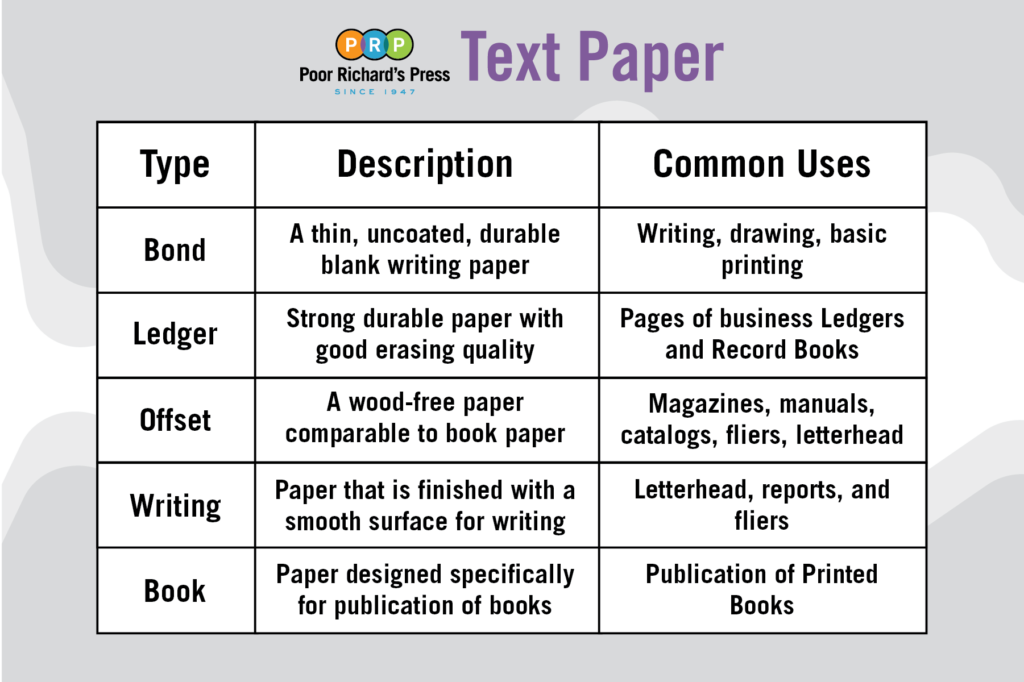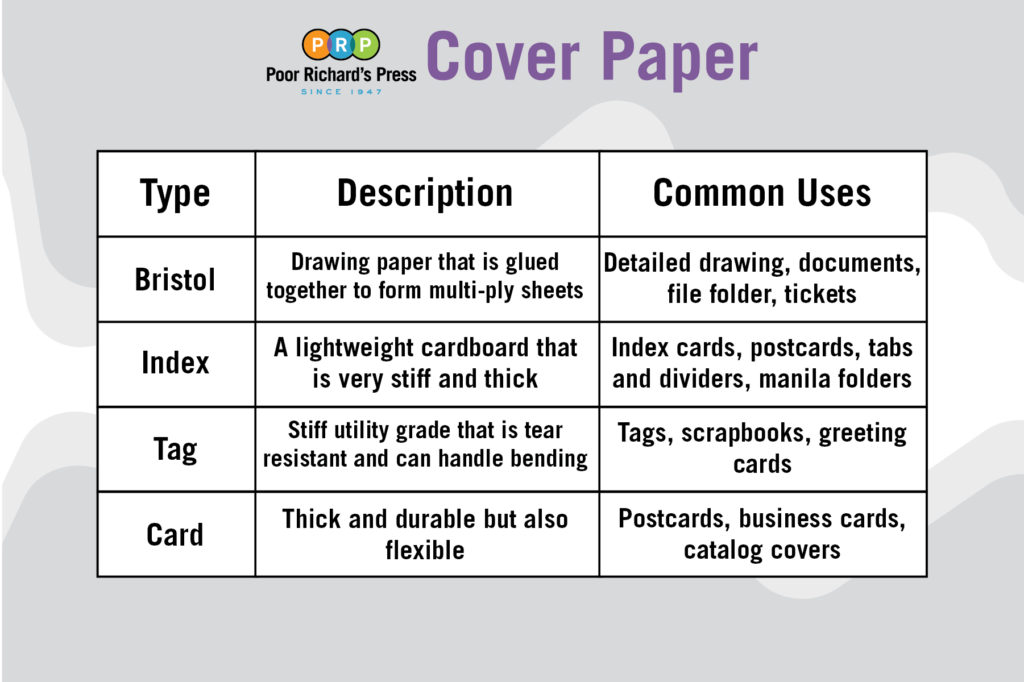Understanding the world of print can be intimidating. Terms like offset, paper weight, aqueous coating, clicks, parent sheet, and others get thrown around with little explanation of what they mean. In order to set our clients up for success, we decided to make a comprehensive guide to everything paper. Deciding on a paper type is one of the first steps in starting a print project, so we wanted to start there. Take a look at some of our other print blog posts for information on other topics that can enhance your print knowledge.
Text vs cover
All paper can generally be grouped into two categories: Text and Cover.
“Text” is the generic, all inclusive name for lighter, thinner paper. Text paper is flexible and can easily be rolled and folded. This can include paper such as Book, Bond, Writing, Ledger, and Offset paper (more on these later). Text paper is often used for items like flyers, letterheads, bookpages, notepads, etc.
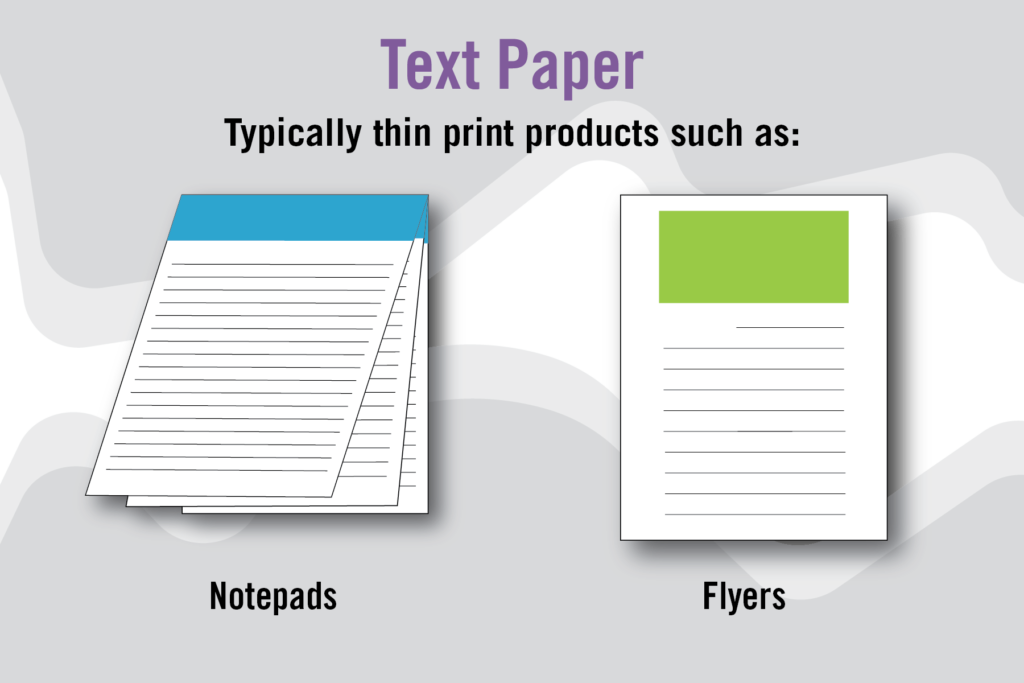
“Cover” is a generic name for heavier and thicker papers. Cover paper is more durable than Text and and needs to be scored before folding. Cover paper can have texture and can have a glossy or matte appearance. Cover paper includes stocks such as Bristol, index, Tag, and Card paper (more on this later). Common items printed on Cover paper are postcards, invitations, presentation covers, lightweight packaging, and more.
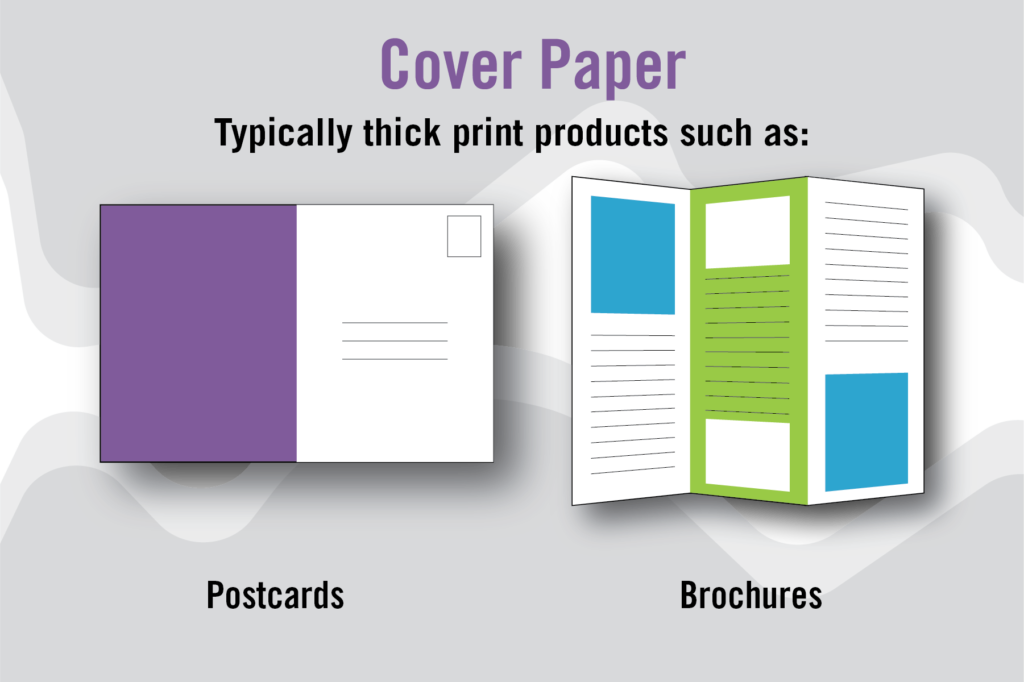
what’s the difference between # (lb) and GSM?
While Text and Cover are the two main groupings that all paper types fall under, there are also two separate numbering systems that determine the specific weight a paper is. These numbering systems are the International Metric System and the North American System. The International Metric System uses grams per square meter (gsm or g/m2 or g/m²) while the North American System uses a pound rating (# or lb).
The North American System is based on the weight of 500 sheets (also known as a ream of paper). So for example 80# cover is categorized as such because a ream of 80# cover would weigh 80 pounds.
The North American System can be a bit confusing because the same pound number can be used for both heavier (Cover) and lighter (Text) paper. So, 80# Cover paper is almost twice as heavy as 80# Text. For Example. 80# Text weighs 104 g/m² while 80# Cover weighs 218 g/m².
In order to classify each weight for both Text and Cover papers, the ream of paper is made up of 2 different sized papers. The Text stock papers get weighed at 25″ x 38″ sheets while the Cover stock papers are weighed at 20″ x 26″ sheets.
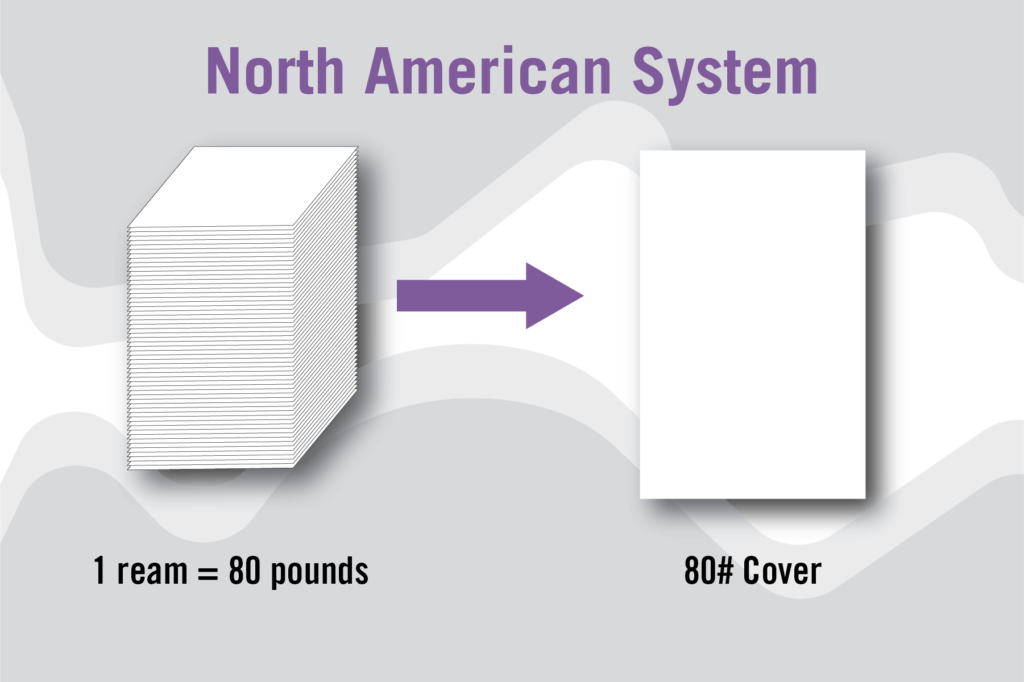
The International Metric System bases their rating by the weight of a 1 meter by 1 meter sheet. So, a paper that is classified as 200g/m² would weigh 200g/m² when sized as a 1 x 1 meter piece.
The International Metric System does not use the same numbers for both Cover and Text weight papers. The higher the number is, the more weight and generally the thicker the paper is.
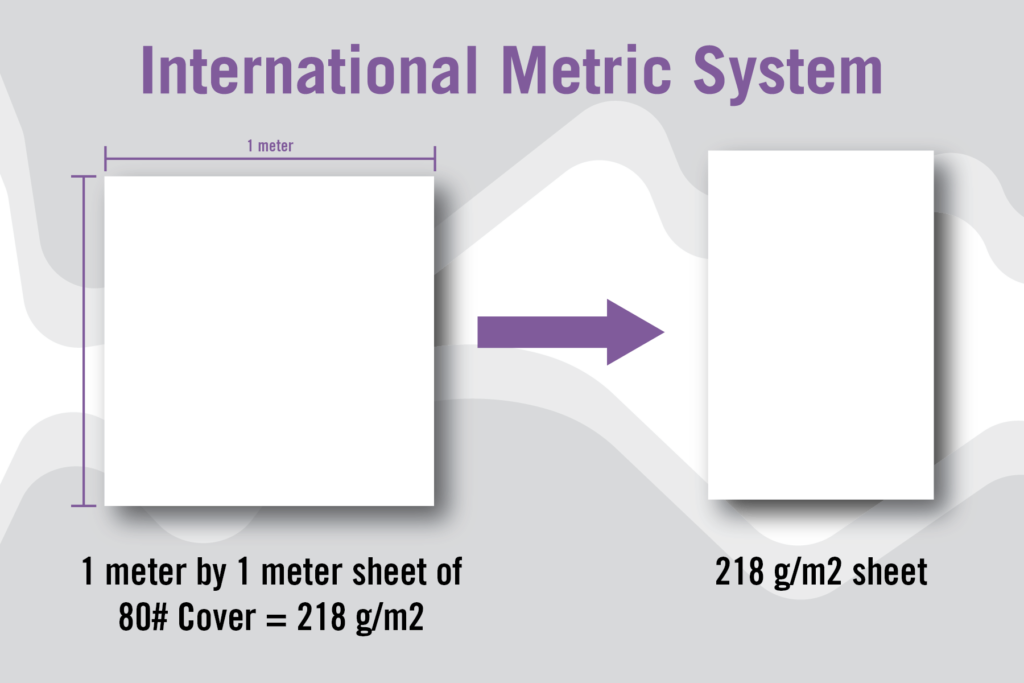
Below we provided two charts with general descriptions of common paper types and how they are most commonly used. Feel free to download or save these assets for future use.
